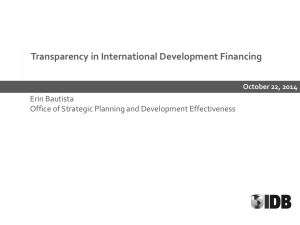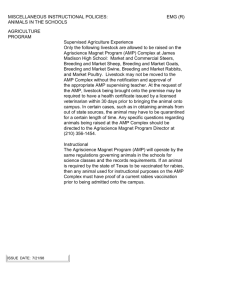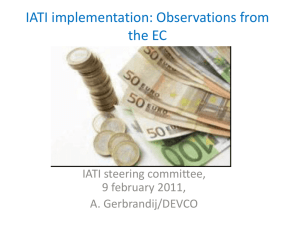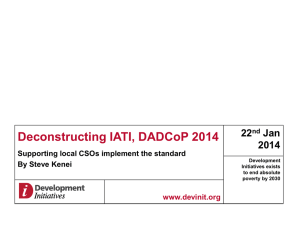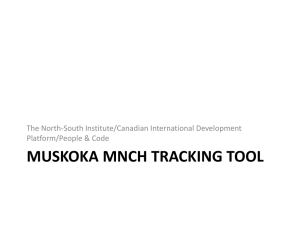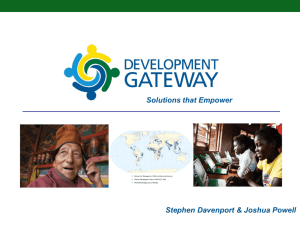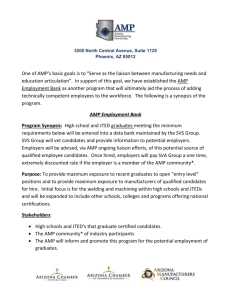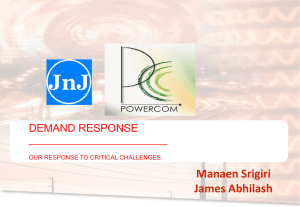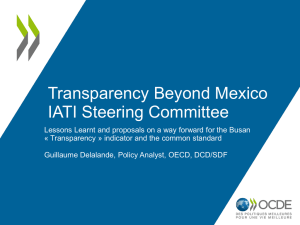Presentation - –AIMS implementation in Honduras
advertisement
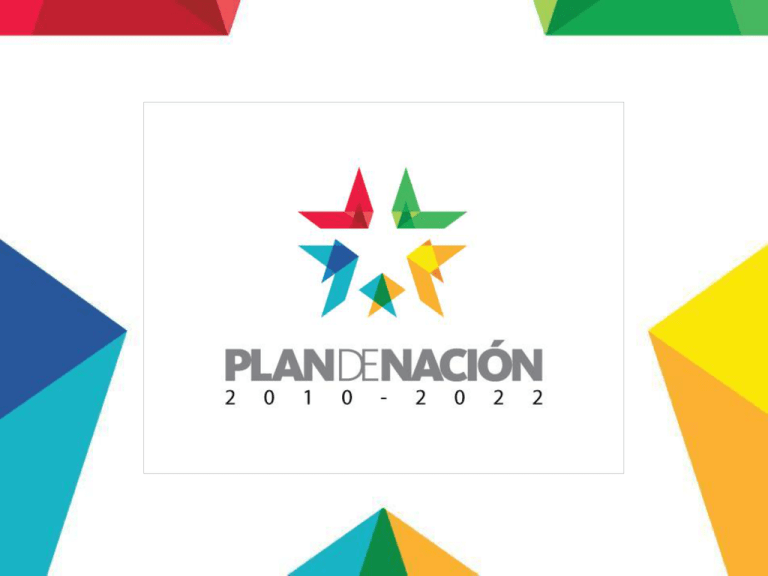
2010 TIMELINE •The Ministry of Planning and Foreign Cooperation [SEPLAN] was created •Information and documents regarding foreign cooperation were found in boxes in a warehouse •SEPLAN began a campaign of gathering information in an Excel Spreadsheet •We created an Microsoft Access Database that contained this information, but the tool was unruly, complicated to use. •In order to produce reliable and timely information for decision makers, we saw the need to establish a modern system of handling Aid data 2011 • Honduras became a signatory of IATI and took decisive steps towards establishing an AMP that could house the data provided by IATI. • A pilot study and AMP were set up at the Ministry. 2012 • A more complete and manageable version of the AMP was made available. 2013 • AMP was made public with the creation of a simplified public portal where anyone with an internet connection could visit and get a good idea of the International Aid portfolio in Honduras. • We’ve : • Georeferenced each project down to the municipal level. • E-library available with documents relating to the projects, sectorial diagnostics, gender studies, impact evaluations and general consultancy products. • Moved valuable documents from forgotten shelves into the public domain. • Triggered a paradigm shift in public access to information related to the use of public funds, specifically those related to Development cooperation. Before the Establishment of AMP • We faced significant challenges in obtaining accurate and timely information. • Development cooperation makes up almost 15% of our national budget and around 70% of our public investment. Therefore it is of crucial importance that we be able to access Aid Data in very short timeframes, analyze the data and insert it into our national development plans. •Having data available is not only about transparency, it is about creating national capacities in development planning and institutionalize a real and effective alignment of development cooperation to our National Development Plan. •Georeferencing Aid data has been crucial in helping us identify which geographical regions have been neglected by donors and which areas have become saturated and inevitably fragmented due to project proliferation. After the Establishment of AMP • Now we have the means to request and register aid information in a standardized format compliant with IATI. • Information is now accessible to the public. • We’ve also made important efforts to get other actors involved in the use of this data. Next Steps •Donors must continue their efforts to report regularly and on time •AMP will help with the Aid Predictability information for Government Planning • A strengthened IATI registry will bolster country partner efforts in data transparency •Making aid data transparent is making partner countries stronger counterparts, it helps us in development planning, and is an invaluable tool for how partner countries manage aid. •Honduras is working on a South South Cooperation module and we will analyze whether the IATI standard is a suitable mechanism for sharing this type of information. South South Cooperation Module •Why do we need a SSC module? •Continued growth of South-South cooperation •Emergence of new actors and modalities •Systematize the SSC offer and demand •What's different? •Special emphasis on qualitative data; while still including financial data. •What do we expect to accomplish with this module? • Ensure the sustainability of the knowledge sharing. • Take better stock on lessons learned. • Better monitor and improve the implementation of projects. • Make SSC a more visible component of our aid portfolio Challenges • The lack of a standardized format and consensus on general definitions about SSC at regional and global level. •Although our AMP is compliant with the current IATI standard, we collect data from Donor Country Offices and feed it manually into the AMP. • The information that is found in the IATI registry does not yet represent an advantageous way of collecting and using data. •Donors seldom report their activities in a regular fashion, and even so, the data is not as current as the data that we collect manually. •Data collection and data entry implies a cost in human resource time which could be diminished by automatic data exchange.


